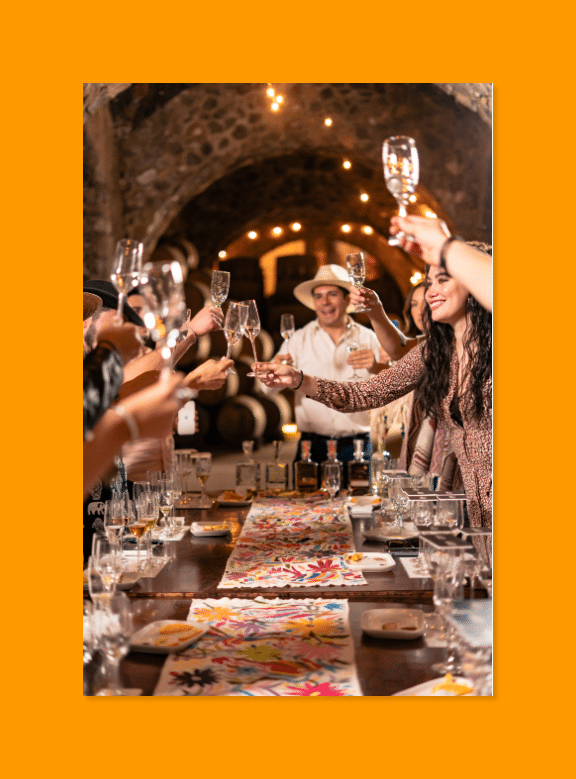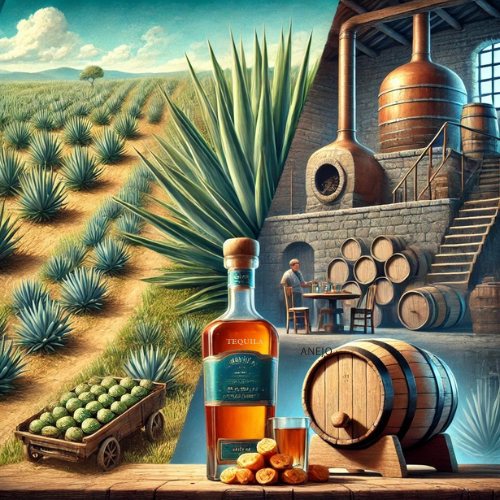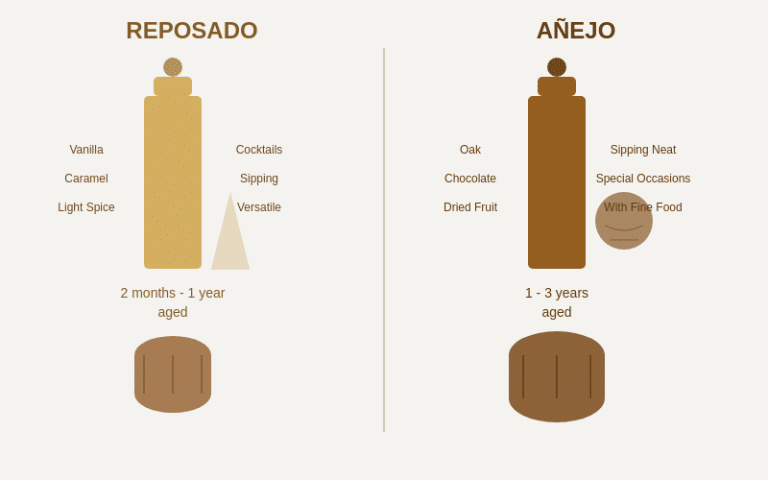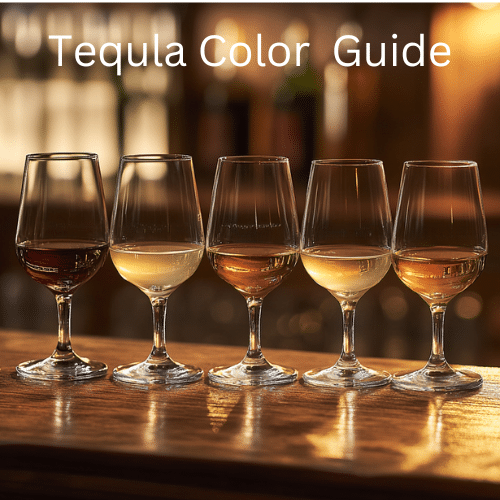Tequila Tasting Party Ideas for Memorable Nights
Hosting a tequila tasting party is more than just pouring drinks—it’s about creating a memorable night full of…

Hosting a tequila tasting party is more than just pouring drinks—it’s about creating a memorable night full of flavor, fun, and connection. Whether you’re celebrating a special occasion or just gathering friends for something different, a well-planned tequila tasting turns a casual evening into an experience. From blind tastings and trivia games to DIY cocktail stations and themed photo booths, there are endless ways to engage guests and explore the rich world of agave spirits. The key is to balance education with entertainment—helping your guests discover the nuances between blancos and añejos without ever feeling like they’re stuck in a classroom. Add thoughtful touches like tasting note cards, food pairings, and non-alcoholic options, and you’ve got a night that everyone will remember (and feel good about the next day). Ready to elevate your hosting game? These tequila tasting party ideas will help you plan an unforgettable night, sip by sip.
Understanding Tequila Varieties Before Your Tasting
When I hosted my first tequila tasting party five years ago, I made a rookie mistake that still makes me cringe. I bought whatever bottles had the prettiest labels and called it a day. My guests were polite, but I could tell they weren’t impressed with my random selection that didn’t showcase what tequila is really about.
Fast forward to today, and I’ve learned a thing or two about proper tequila selection. Trust me, understanding the different varieties will completely transform your tasting experience. Let me walk you through what I wish I’d known back then.
The Five Main Tequila Categories You Need to Know
The first thing you need to know is that tequila isn’t just tequila – there are five distinct categories, each with its own personality.
Blanco (also called Silver or Plata) is the purest expression of tequila. It’s unaged or aged less than two months, usually in stainless steel tanks. When I first tried a quality Blanco, I was blown away by how the agave flavor jumps right out at you. It’s crisp, often with pepper notes and that distinctive earthy agave character. This is where you really taste the plant itself.
Reposado changed my mind about what tequila could be. These are “rested” for 2-12 months in oak barrels, and man, what a difference! The harsh edges of the Blanco smooth out, and you get these lovely subtle notes of vanilla and caramel mixing with the agave. I love serving Reposado to friends who claim they “don’t like tequila” – it almost always changes their mind.
Then there’s Añejo, which had me reconsidering my bourbon habit. Aged 1-3 years in oak, Añejo tequilas develop this incredible complexity. The first time I sipped a good Añejo, I was struck by the rich amber color and the deep flavors – oak, chocolate, sometimes even coffee or tobacco. It’s meant for sipping, not shooting!
Extra Añejo is the luxury category I save for special occasions. These are aged more than three years and can get pretty pricey. Worth it though! I splurged on a bottle for my 40th birthday, and the depth of flavor was mind-blowing – almost like a fine cognac but with that distinctive agave backbone.
The wild card is Joven (or Gold). These are typically mixtos that blend Blanco with aged tequila or add coloring and flavoring. I’ll be honest, I wouldn’t really use these at tasting parties because they can be misleading about what tequila really tastes like.
The Terroir Factor: How Region Affects Your Tequila
Did you know tequila has regions just like wine? This blew my mind when I first started getting serious about tastings. By law, tequila must come from specific parts of Mexico, primarily Jalisco (where the town of Tequila is located) and limited areas of four other states.
The main regions are:
Highlands (Los Altos): My highland tequilas tend to be sweeter, more floral, and fruitier. The agave grows in red soil at higher elevations, which gives the plants different characteristics. The first time I compared a highlands Blanco side-by-side with a lowlands one, I couldn’t believe they were the same spirit category!
Lowlands (Valley): These tequilas often have more earthy, herbaceous flavors – sometimes even with this interesting olive-like quality. I find they can have a bit more minerality too, which makes for great cocktails.
When planning a tasting, I try to include bottles from different regions so my friends can experience these differences. It’s fascinating how the same plant can express itself so differently based on where it’s grown.
Selecting Tequilas That Tell a Story
When I’m putting together a tasting now, I think of it as telling a story through the bottles. I usually select 3-5 tequilas that highlight different aspects of production.
I’ll always include a quality Blanco to showcase the pure agave flavor – this becomes our baseline. Then I add a Reposado and Añejo from the same producer so we can taste how aging transforms the same base spirit. If budget allows, I might throw in an Extra Añejo as a treat.
I’ve found it’s also interesting to compare highland vs. lowland expressions of the same style. Sometimes I’ll include a tequila made with traditional stone-crushed methods (tahona) alongside more modern production styles.
One thing I’ve learned not to do? Don’t try tasting more than 5-6 tequilas in one session. Your palate gets overwhelmed, and after a while, everything tastes the same. Made that mistake at a friend’s bachelorette party, and by the end, we couldn’t tell what we were drinking anymore!
Budget Tips from Someone Who’s Been There
Good tequila ain’t cheap, I know. But you don’t have to break the bank either. After years of trial and error (and some painful credit card statements), here’s what I’ve found works for different budgets:
Entry-level but still good quality: Look for 100% agave Blancos in the $25-35 range. Olmeca Altos, Espolòn, and Cimarrón won’t disappoint and make great introductions.
Mid-range treasures: In the $40-60 range, you can find excellent Blancos and Reposados that showcase authentic production methods. Fortaleza, Ocho, and G4 are worth every penny in this category.
Special occasion splurges: If you’re celebrating or want to treat yourself, the $60-100 range offers amazing Añejo options like El Tesoro, Siete Leguas, or ArteNOM selections.
Luxury indulgences: Above $100, you’re into Extra Añejo territory with brands like Tears of Llorona or Rey Sol – definitely sipping tequilas to be savored slowly.
The biggest lesson I’ve learned? Price doesn’t always equal quality in tequila. I’ve had $30 bottles I preferred to $100 ones. Trust your own taste buds, not the marketing!
Setting up a proper tequila tasting completely changed how I appreciate this amazing spirit. Gone are the days of salt-lick-and-lime shots – now it’s all about savoring the complex flavors that good tequila offers. Your journey is just beginning, and I’m kind of jealous you get to discover all this for the first time!
Essential Supplies and Setup for Your Tequila Tasting
I learned the hard way that glassware can make or break a tequila tasting party. My first time hosting, I served everything in shot glasses—rookie mistake! Now I use tulip glasses or snifters which concentrate those amazing aromas. If you want to go authentic, try terracota shot glasses from Mextequil, though honestly, my wine glasses work in a pinch when I’m short on supplies.
Setting up tasting mats was a game-changer for my events. I create simple placemats with circles for each glass, along with scorecards where guests rate aroma, flavor, and finish. I also make little information cards listing each tequila’s production region, aging time, and key flavor notes. This gives everyone something to reference when they’re trying to figure out if they’re tasting vanilla or caramel in that reposado tequila.
Don’t forget palate cleansers! I always have plenty of room-temperature water, unsalted crackers, and small lime wedges. Trust me, your taste buds get exhausted quickly between premium tequila brands, especially when comparing highland tequila characteristics to lowland tequila notes.
For room arrangement, I’ve found lighting matters big time. I once hosted in a room with harsh overhead lights and everyone missed the subtle amber hues in the añejo tequila selection. Now I use soft, warm lighting and arrange seating in a circle so everyone can discuss their tasting notes easily.
As for décor, I love incorporating Mexican-themed party ideas like colorful papel picado banners, blue agave plants as centerpieces, and vintage tequila bottles with LED lights inside. My favorite touch is creating a map of Jalisco tequila varieties that shows where each bottle in our tasting originated.
Just remember—the best tequila tasting party ideas focus on appreciation, not intoxication! Always plan for designated driver options or rideshares.
Creating the Perfect Tasting Flight Order
I bombed my first tequila flight by serving an extra añejo before a blanco—talk about a palate killer! After that disaster, I learned that progression is everything in a tequila tasting party. Always start with lighter expressions and work your way to the more complex ones.
My foolproof flight order starts with crisp blancos that showcase pure agave flavors, then moves to reposado tequila flavors with their hint of vanilla from oak aging, followed by the richer añejo tequila selection with caramel and spice notes. If you’re including a premium extra añejo, that’s your grand finale. I allow about 10-15 minutes between pours so everyone can really appreciate each expression without rushing.
Temperature matters way more than I initially realized! I once served everything straight from the fridge—yikes. Now I know blancos show best slightly chilled (around 60°F), while aged tequilas need to warm up to about 65-68°F to release their complex aromas. I take bottles out of storage about 30 minutes before the tasting starts.
I’ve picked up some tequila tasting techniques from master distillers that transformed how I approach each glass. First, we assess the color and viscosity by tilting the glass against a white background. Then comes the fun part—nosing! I teach my guests to sniff gently with their mouths slightly open to catch the full aroma wheel without the alcohol burn.
For sipping, I encourage tiny sips that coat the entire tongue. My favorite trick for helping newbies identify tequila flavor profiles is providing a vocabulary list with common descriptors like “citrus,” “pepper,” “vanilla,” and “cooked agave.” Sometimes I bring actual items (like vanilla beans or dried fruit) so guests can make real-world connections to what they’re tasting. Always reminds me of my first Highland tequila experience when I couldn’t figure out what that floral note was until someone handed me an orange blossom!
Delicious Food Pairings for Tequila Tastings
My first tequila tasting was a flavor disaster! I served spicy buffalo wings that completely wrecked everyone’s ability to taste the subtle notes in our premium bottles. Live and learn, right?
I’ve since discovered that traditional Mexican pairings work beautifully with tequila. Citrus fruits like oranges and grapefruits complement blanco tequila characteristics amazingly well. For aged expressions, I serve small bites of rich mole sauce on tortilla chips—the chocolate and spice notes mirror what you’ll find in a quality añejo tequila selection.
My go-to appetizer recipe is a simple cucumber round topped with a bit of cotija cheese and a thin slice of serrano pepper. The fresh, cooling cucumber doesn’t overwhelm the palate between tastings, while the cheese and pepper provide complementary flavors that enhance rather than compete with the tequila.
Finding the right balance between food types is crucial. I pair spicy foods with reposado tequila flavors (the slight sweetness offsets the heat), savory dishes with blancos (their herbal notes shine), and sweet bites like Mexican chocolate with añejo expressions (they enhance each other’s caramel undertones).
My sanity-saving discovery was how many tequila party food pairings can be made ahead! I prepare tostadas with black bean purée and avocado crema the morning of the event and just assemble them right before guests arrive. Hibiscus agua fresca can be made days in advance and doubles as a palate cleanser.
For my vegetarian friends, I create jalapeño-stuffed olives and jicama sticks with lime and chili powder. These plant-based options are crowd-pleasers that accommodate dietary restrictions while still honoring Mexican-themed party ideas. I once tried to skip the vegetarian options at a tasting, and two guests could barely participate in the food pairings—lesson learned about inclusivity!
Remember, the best tequila appreciation guide includes thoughtful food that enhances, rather than overwhelms, those precious spirits you’ve selected!
Educational Elements to Include in Your Tasting Party
I made a rookie mistake at my first tequila tasting by jumping straight into drinking without any background info. Talk about a missed opportunity! Now I always kick off with a mini-history lesson that gets everyone more invested in what they’re tasting.
Did you know tequila dates back to the 16th century? I love sharing how the Aztecs considered agave sacred long before Spanish colonizers arrived and started distilling it. Whenever I mention that tequila was Mexico’s first indigenous distilled spirit, my guests seem to appreciate each sip even more. The cultural significance runs deep—it’s not just about the drink but about the heritage and traditions it represents.
The agave harvesting process completely fascinates my friends who’ve never thought about where tequila comes from. I show photos of the jimadores using their coas (specialized harvesting tools) to trim the spiky blue agave plants. It takes years of skill to identify precisely when an agave is perfectly mature—usually 7-10 years! I once tried explaining this without visuals and nobody got it. Now I keep a little diagram showing how the piñas are cooked, crushed, fermented, and distilled.
People get a kick out of the stories behind famous brands. My favorite is sharing how Don Julio González revolutionized the industry by creating the first luxury tequila and designing a shorter bottle so people could see each other across the dinner table. These little nuggets of tequila history facts make the experience more memorable.
The traditional vs. modern production methods discussion always stirs up debate at my parties. I explain how traditional tahona stone-crushing compares to modern roller mills, and how brick ovens differ from autoclave steamers. When guests understand these differences in tequila distillation methods, they can better appreciate why that small-batch artisanal tequila costs more than mass-produced options.
After we finish the formal tasting portion, I bring out recipe cards for three simple tequila cocktail recipes—usually a classic margarita, a paloma, and something seasonal like a spicy cucumber cooler. This gives everyone a chance to enjoy their newfound tequila knowledge in a more relaxed way. Last summer, I forgot to plan this transition, and the party kinda fizzled out after the tasting. Adding cocktails keeps the tequila appreciation going while shifting to a more social vibe!
Just remember—the educational elements should feel fun, not like a boring lecture. Keep it light, mix in humor, and connect the facts to what’s in their glasses. Your guests will thank you with their newfound enthusiasm for quality tequila!
Interactive Activities and Games for Your Tequila Party
I learned the hard way that just sipping tequila gets old fast. My first tasting felt like a science experiment—until I added games that got everyone laughing and comparing notes. Now, blind tasting challenges are my favorite. I cover bottles with paper bags, number them, and have guests guess which is which. Pro tip: label everything before the tequila kicks in—I once mixed up the premium bottle with the budget brand!
Tequila trivia adds even more fun. I make cards with questions like “How many years does blue agave take to mature?” or “Which state produces the most tequila?” Guests compete in teams, and winners take home a mini-bottle of añejo.
A DIY cocktail station lets everyone experiment after the formal tasting, using ingredients like jalapeño slices, hibiscus syrup, and herbs. It’s awesome watching someone who just learned about blanco tequila whip up their own drink.
I also set up a photo booth with props and decorations—those instant camera pics always get the most laughs. And tasting note templates help guests compare flavors and develop their palates.
These activities keep the focus on tequila while making sure everyone has a blast—no boring, stuffy vibes allowed!
Responsible Hosting Tips for Tequila Tastings
My biggest tequila party mistake? Not planning how guests would get home. Since then, I treat responsible hosting with the same care I give to choosing top-shelf tequila. I keep pours small—just ¾ to 1 ounce—so the tasting stays fun and educational. Early on, I was too generous, and by the third pour, no one could tell highlands from lowlands!
Now, transportation is a priority. I post taxi numbers, have rideshare apps ready, and offer a non-alcoholic “VIP flight” for designated drivers, arranged when guests RSVP. Having the conversation early avoids awkwardness later.
I space pours about 15 minutes apart and serve strategic snacks like guacamole, cheese, and nuts to help pace the evening. Protein and healthy fats make a big difference in slowing alcohol absorption.
I’ve learned to recognize when someone’s had enough—whether it’s a flushed face or suddenly claiming tequila expert status. A discreet switch to water or food can go a long way, and friends have thanked me for it later.
To include non-drinkers, I offer a flight of aguas frescas or mocktails that mirror the tequila progression. My hibiscus-cinnamon version was a hit—even tequila fans went back for more. Best compliment? Everyone made it home safe and happy.
Conclusion
Hosting a tequila tasting party is the perfect way to deepen your appreciation for this complex spirit while creating lasting memories with friends and family. By carefully selecting your tequila lineup, preparing the right environment, and incorporating delicious food pairings, you’ll create an event that feels both educational and entertaining! Remember that the most successful tastings balance structure with fun – so don’t be afraid to adapt these guidelines to suit your personal style. Now that you’re armed with all the knowledge you need, it’s time to send those invitations and start planning your unforgettable tequila experience. ¡Salud!






